Here’s the dilemma. The customer wants a recessed shampoo niche. But once the walls were opened up there is no good place to put one.
There are either wires and pipes in the way or the stud bay is too narrow. The only good place to install one would be on an exterior wall which would leave a big gaping hole in the home’s insulation. So what’s the best way?
One option is to install some elegant shower corner shelves. But if their heart is set on a recessed niche?
To rule out an exterior wall for a shower niche can sometimes mean that you just can’t put one in a shower. But do you just ignore the giant cold spot (or hot spot, depending on your climate) and put one in any way?
Estimated reading time: 5 minutes
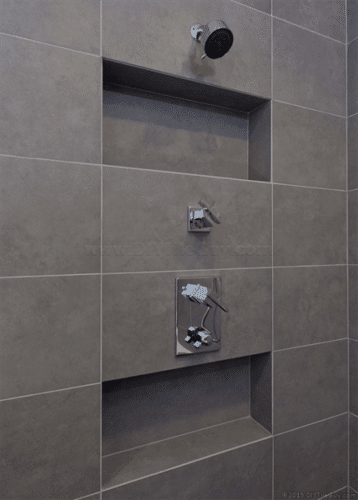
I wrote a post called 10 things to consider before building your shampoo shower niche along with 2 things not to do. Spoiler: this is one of the two things not to do. Check out the post if you are curious about the rest.
Insulating a Recessed Shampoo Niche in an Exterior Wall of a Shower
Here’s a method that I have come up with to make the best of both worlds. A compromise.
You still get the recessed shampoo niche in the shower and some insulation as well. Here’s how it works:
Most exterior walls are 2×6 framing. I recommend buying a pre-made foam niche such as the Laticrete Hydroban niche, Noble Niche, or Schluter Kerdi Niche.
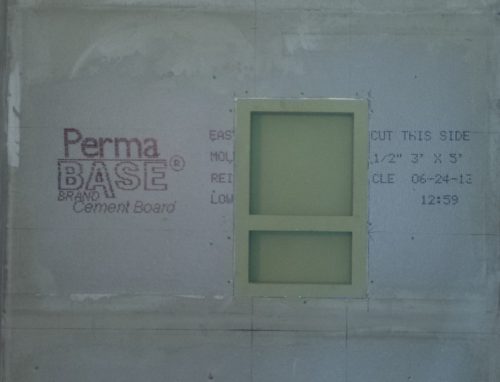
They come in a variety of sizes and are made to fit in a typical stud bay. Some come with shelves and compartments.
Be sure to look at my 4 part series dealing specifically with shower niche installation: The Ultimate Guide to Building a Preformed Recessed Shower Niche
How much R-value?
We know insulation is rated in terms of r-value. The foam niches are made from a foam called polystyrene. This type of foam has an R-value of 5 per inch. This would give the pre-made foam niche an R-value of 2.5.
Now the pre-made foam niches come 4 inches deep. This is to allow for 3.5 inch wall stud (common in interior walls) and 1/2 inch tile backer board.
Since the niche will go on an exterior wall (5.5 inches instead of 3.5) this gives 2 inches of unused space.
Down at your local home improvement center, you can buy 2-inch polystyrene foam. I bought this blue foam and it comes in a 24×96 inch size and costs approximately $30.
This is what I use to fill the 2-inch space behind the niche. An r-value of 10 (remember: 5 per inch) added to the 2.5 from the niche gives you an r-12.5 wall.
Less than a normal 2×6 wall with an r-19 value but still better than a window.
Currently, I’m not aware of a way to purchase smaller sizes of the 2-inch foam. It’s not that the cost is overwhelming but you would only use a small piece of it. I wish you could buy by the foot.
How to install a recessed shampoo niche on an exterior wall of a shower
This is what I’ve come up with for a way to install a recessed shampoo niche in an exterior wall without leaving a big hole in your wall’s insulation.
If you have a way to improve upon it or see any issues that I may have overlooked please let me know in the comment section.
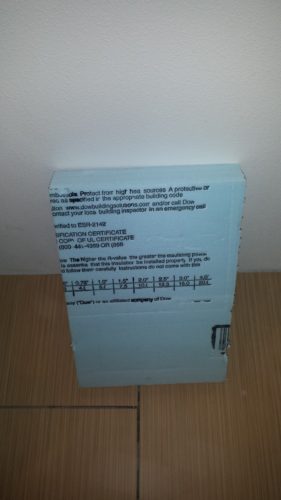
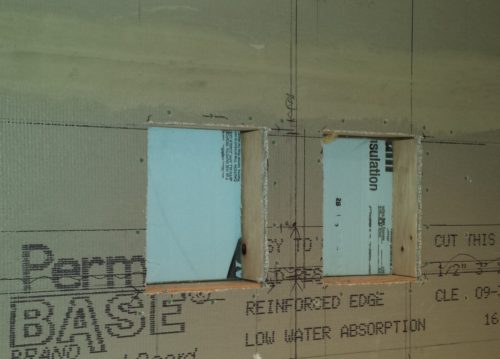
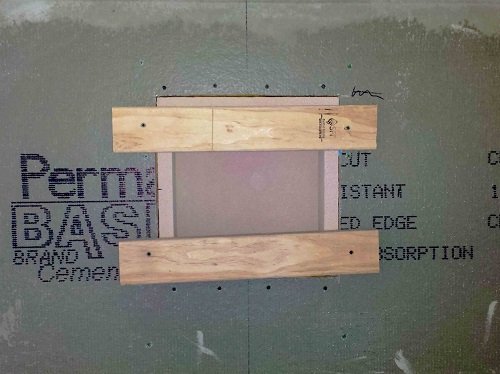
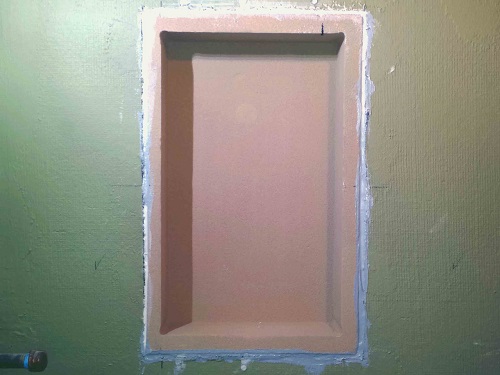
Installing a shampoo niche on an exterior wall isn’t ideal but sometimes the benefits outweigh the drawbacks. Using this method can help regain some of the energy loss.